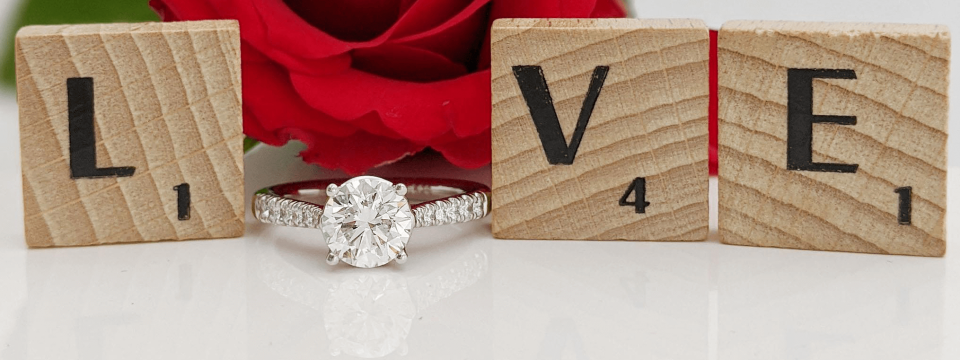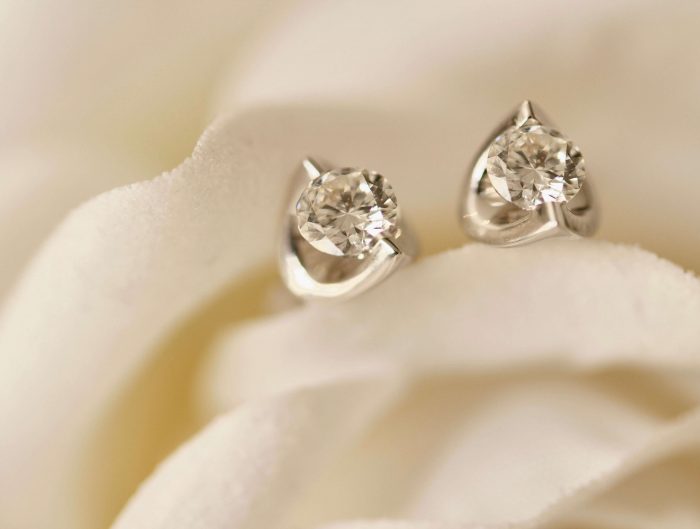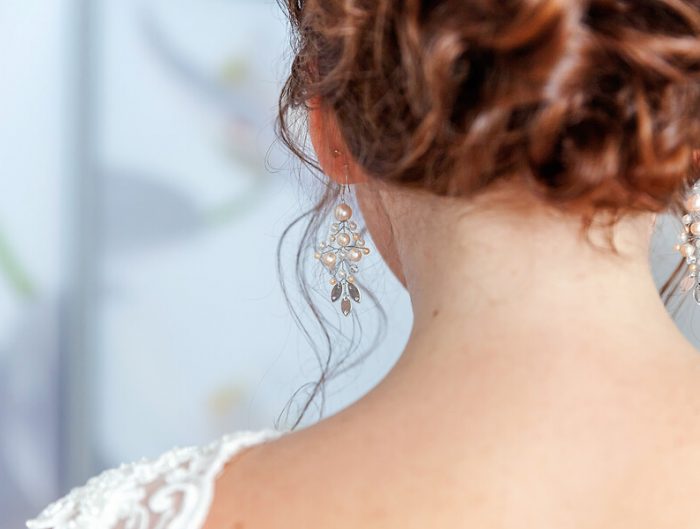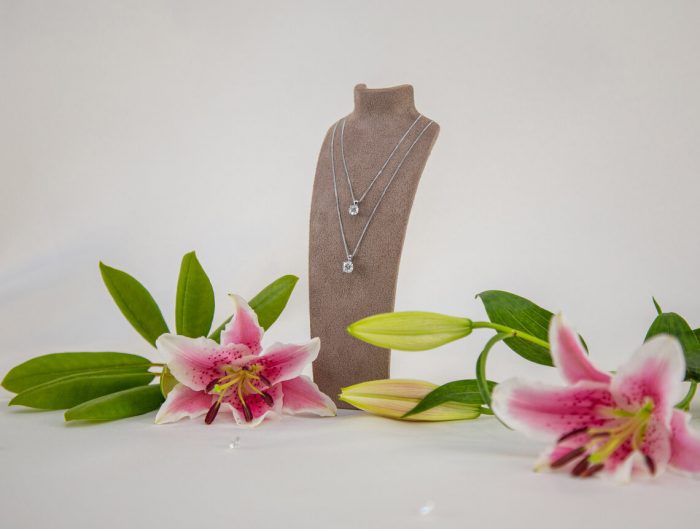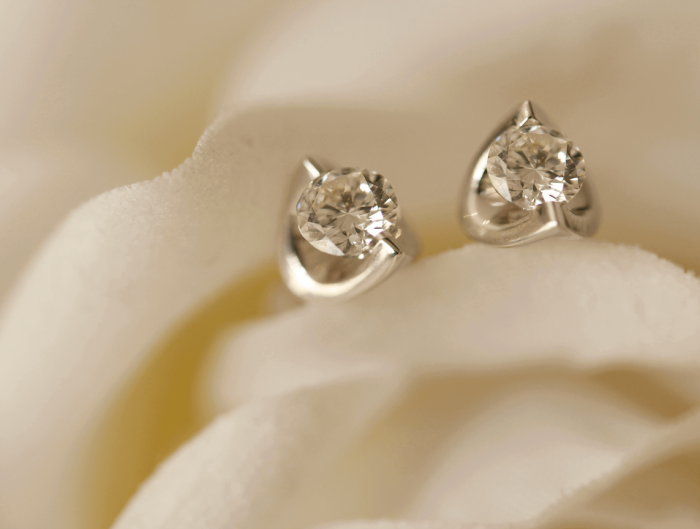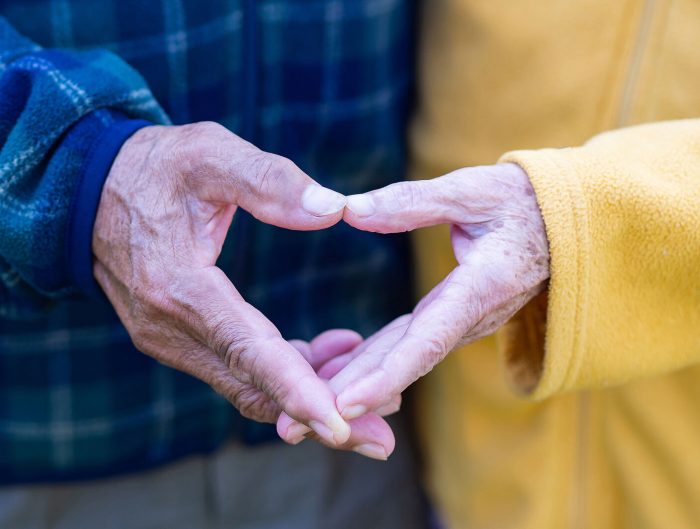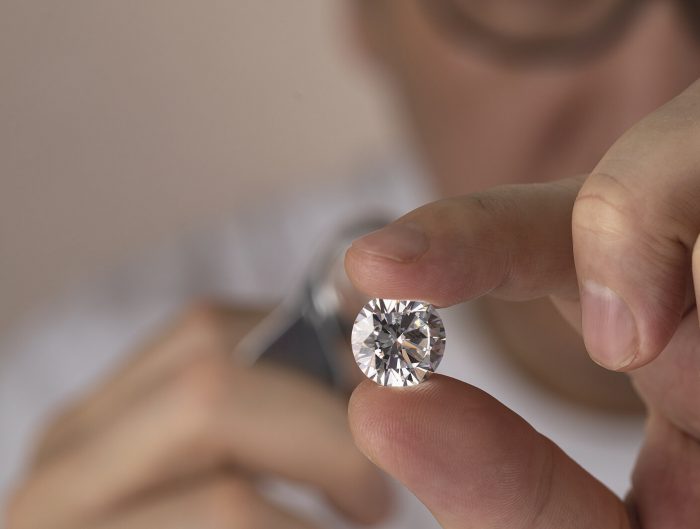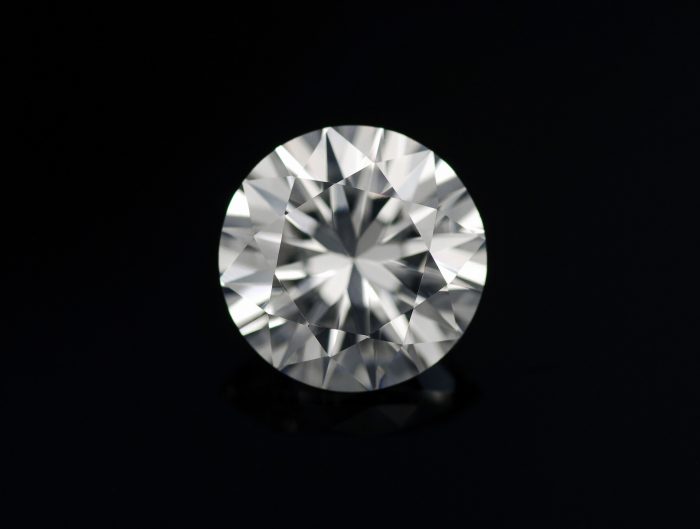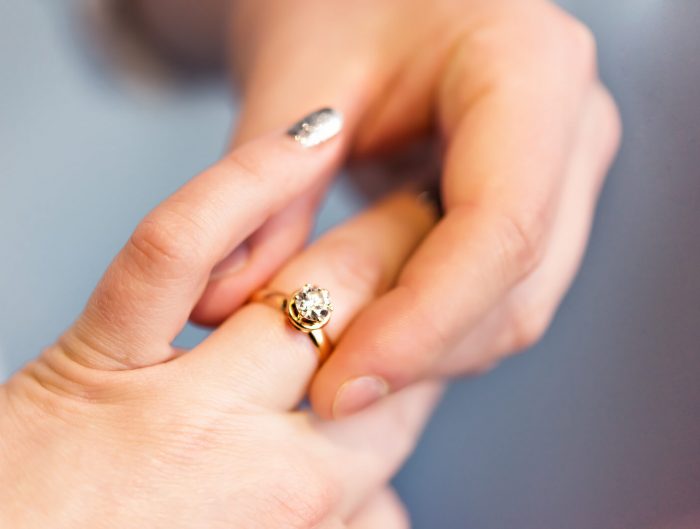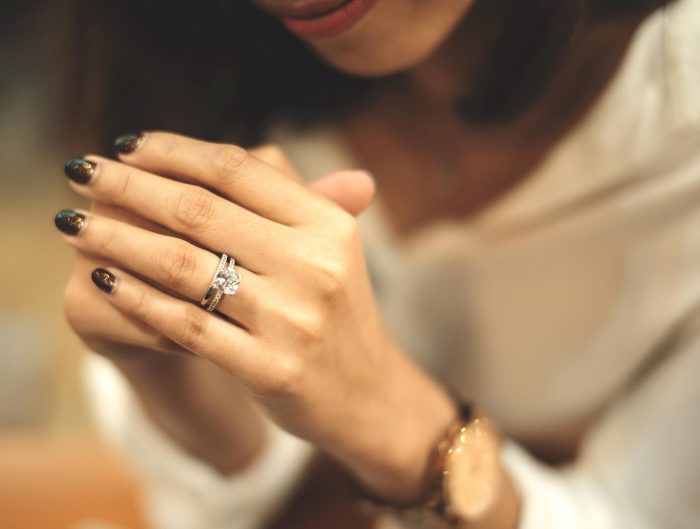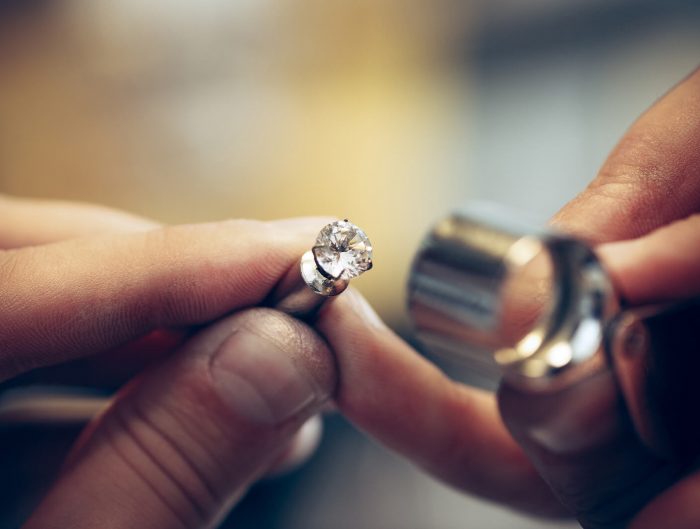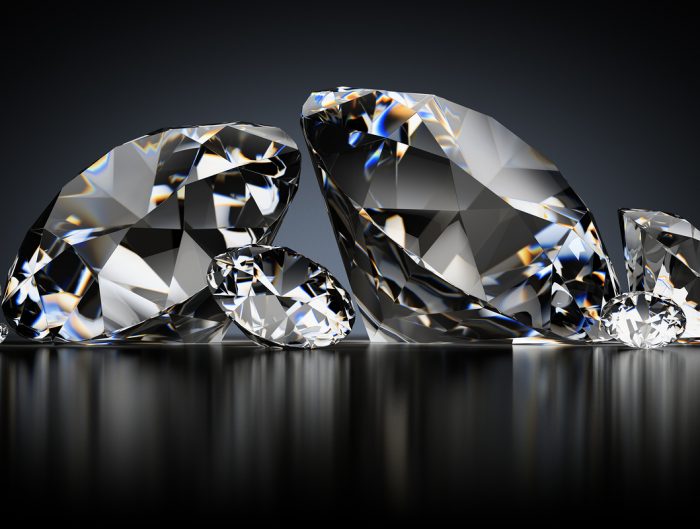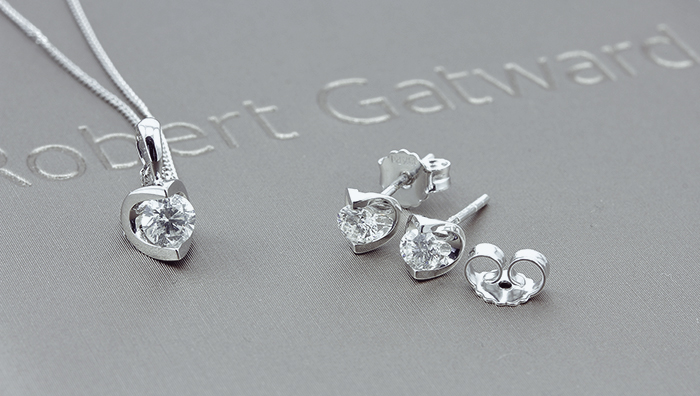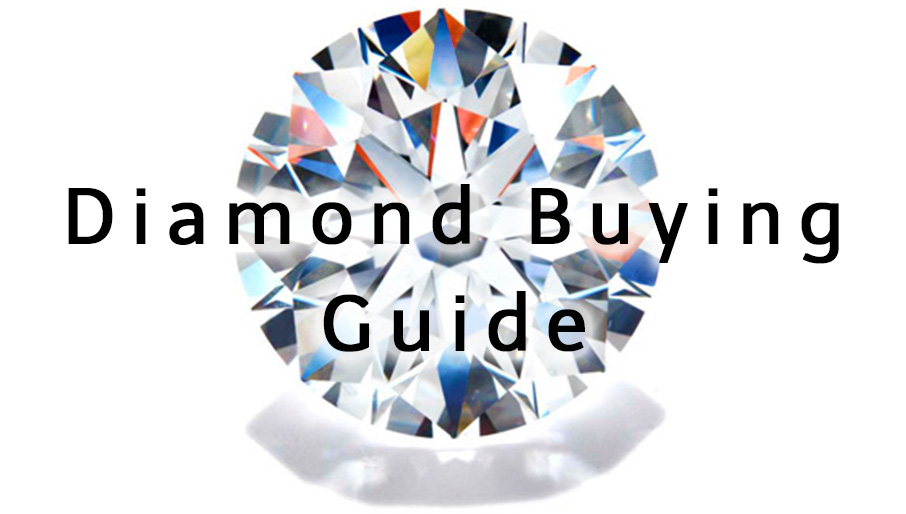Engagement rings signify commitment, love, and the promise of a shared future.
The custom of proposing with a ring comes from an old belief about the fourth finger. People thought a vein ran directly from that finger to the heart, leading to rings worn there becoming symbolic of deep affection and the binding of two souls.
The never-ending band also mirrors the eternity of, while the gem’s endurance and rarity reflect the vow to honour your partner. It also symbolises the uniqueness of a couple’s bond.
With stones that shine as bright as love itself, understanding the meaning behind each gem and style adds even more brilliance to your engagement ring’s sparkle.
Diamond engagement ring meaning
Nothing captures the essence of an engagement ring like a diamond. Its elements have made the gemstone a traditional and iconic proposal choice for many years.
A diamond’s toughness represents relationships that can bear life’s strain. Like the gem, a strong marriage can endure scuffs and scratches without faltering, emerging even more beautiful than it previously was. The diamond’s flawless transparency also conveys love’s purity.
Since early royal engagements, diamonds have embodied the joy and honesty of romantic connections. They illuminate the wonder and preciousness of finding “the one”, its value reflecting the pricelessness of a lifelong bond.
Emerald engagement ring meaning
Emerald engagement rings gleam with the hope of spring and evoke nature’s renewal.
For lovers, emeralds signify resilience, growth, and new beginnings — crucial foundations for a thriving marriage.
Ancient Egyptian queens and medieval European nobles once favoured emeralds for their wisdom and promise of harmony.
Today, their lush green signifies sustainable growth in love and brings healing, wholeness, and nature’s serenity to mind. These calm qualities make emeralds excellent omens for the comfort lovers find in one another.
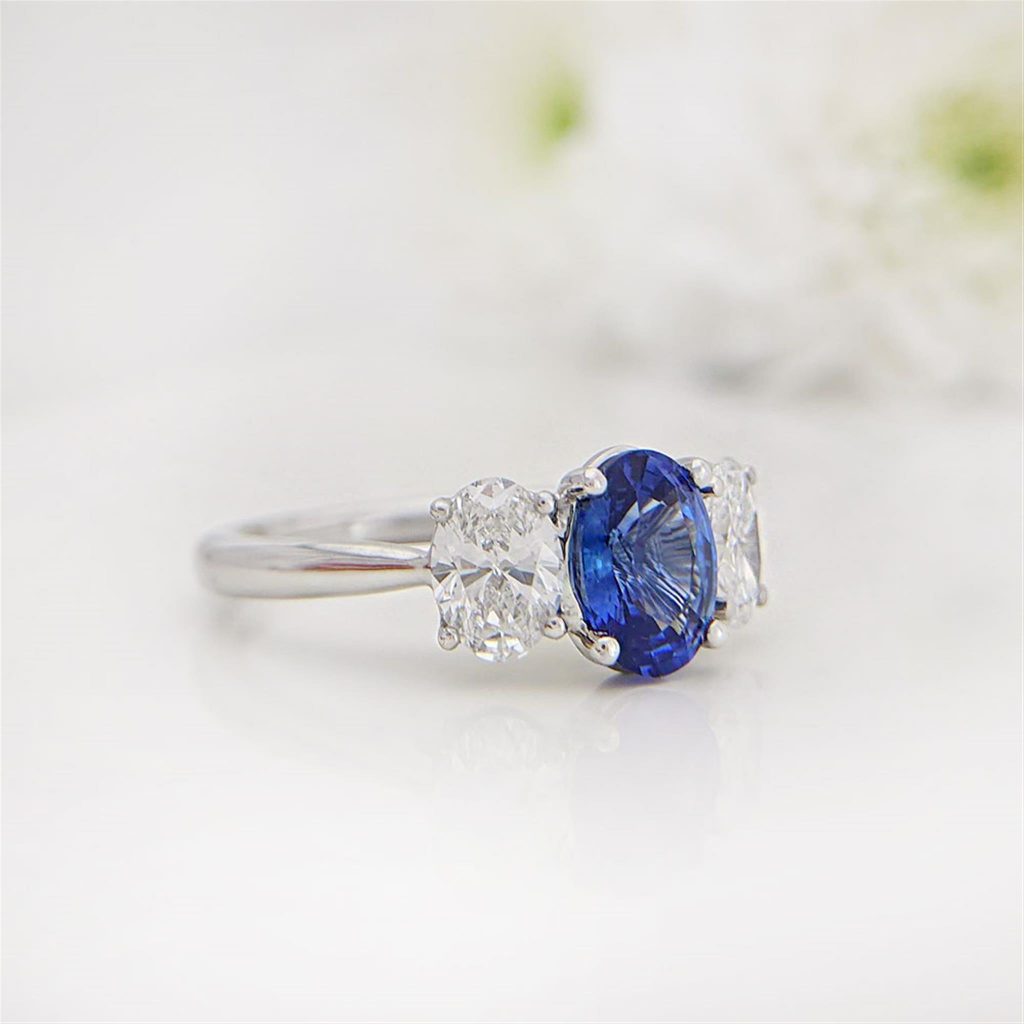
Sapphire engagement ring meaning
Sapphire engagement rings sparkle with centuries of meaning. They’ve long-graced betrothal bands, denoting the dignity, wisdom, and strength of intimate bonds.
As durable as they are beautiful, sapphires also reinforced unions where partners could rely on each other through any situation.
These meanings still hold today, but the azure gem now also symbolises the faith, loyalty, and trust that make up a long-lasting marriage. Sapphires stand for the support and sacrifice that are needed for a couple to weather their storms.
Opal engagement ring meaning
An opal engagement ring radiates magic by flashing its signature rainbow hues. It encapsulates night and day, shining the light spectrum into one display.
Dancing between glimmers of fire and a muted milky glow, opals signify a relationship’s colourful ups and downs.
Ancient myths paint opals as tokens of love and hope. Today, they represent the excitement of romance alongside marriage’s joys and mutual understanding.
The broad personality of the gem matches the reality of romance. It celebrates passionate fireworks, as well as the quiet comfort couples bask in once the crackling fades.
Aquamarine engagement ring meaning
The crystalline aquamarine calls to mind the calm and clarity of water.
With symbols of transparency, insight, and peace, this sea-hued gem graces engagement rings with its ancient healing powers.
In modern settings, the aquamarine’s relaxed and tranquil gleam symbolises the relief lovers find in shared trust — a respite from the murky waters of life.
By conveying purity, hope, and emotional restoration, an aquamarine engagement ring carries meaning as lucid as its crystal-clear shine.
Ruby engagement ring meaning
Few gems ignite the fire of passion like the ruby. Its crimson hue stirs the senses with tokens of vigour, vitality, and the promise of an ever-growing flame.
In earlier eras, ruby engagement rings represented devotion and confidence between partners. Today, their fiery glitter embodies the spark of romance alongside other, more profound meanings.
A ruby’s light also symbolises the incredible strength of vulnerability — when you openly expose your light to another during marriage. The gem celebrates the courageous power of cherished love, burning bold and bright over time.
Three-stone engagement ring meaning
The three-stone engagement ring is a popular style, its trio of stones representing the couple’s past, present and future together.
Having a sparkling centre stone celebrates eager love in the here and now. The band’s side stones mark the couple’s history and new family from their planned union.
A trilogy of gems implies continuity, signifying the stages of a relationship and the enduring strength through each phase.
With gems to ground its wearer across time, the three-stone engagement ring is an emblem of unwavering commitment.
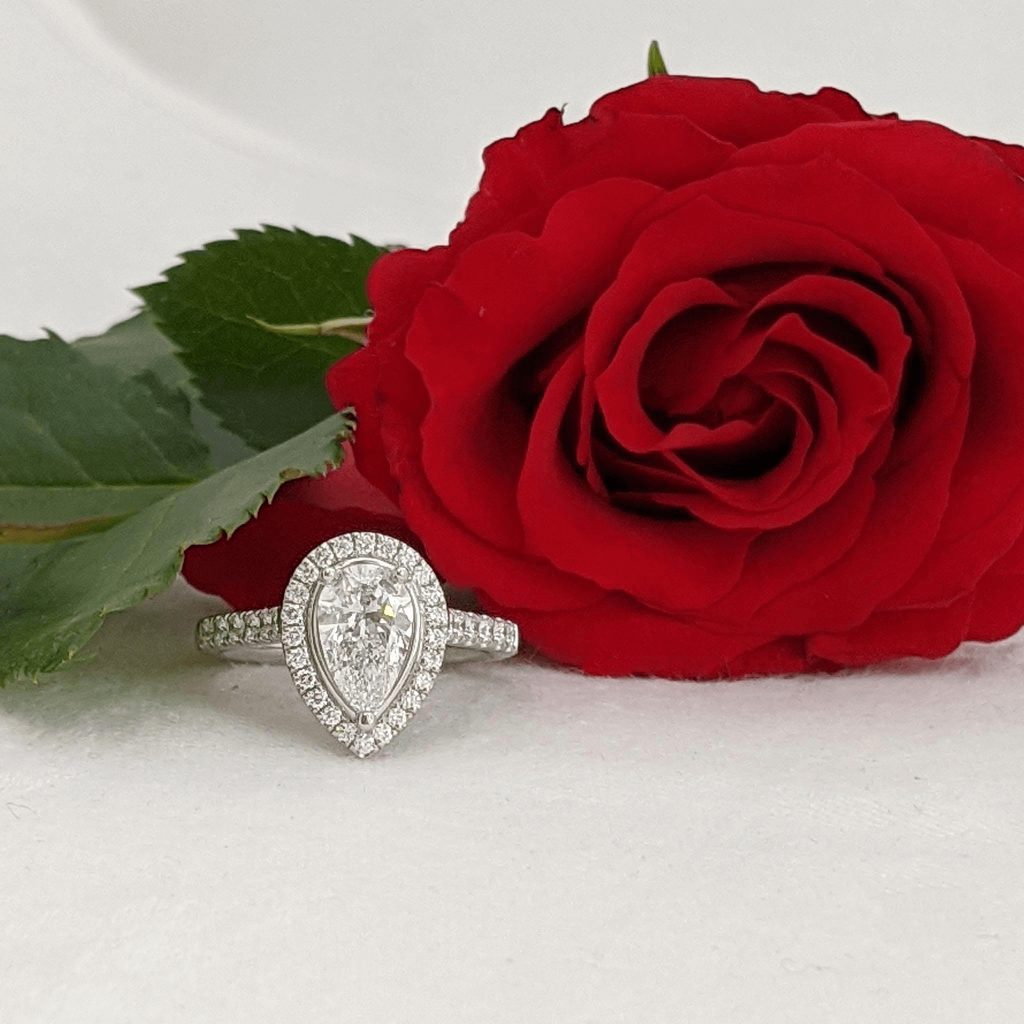
Pear-shaped engagement ring meaning
A pear-shaped engagement ring oozes elegance. The teardrop silhouette has historically linked this special cut to harmony, healing, and feminity, particularly during the Victorian era.
Nowadays, the pear shape translates a personalised and nuanced meaning for modern couples.
Its tapered look, ascending to a single point, evokes two souls converging into one. More literally, the pear cut also suggests the fruitfulness and sweetness of marriage.
Oval engagement ring meaning
Oval-shaped gemstones are classic and timeless.
Opting for an oval engagement ring conveys a sense of enduring style and sophistication, while the continuous shape (without sharp edges) symbolises unity and eternity. There’s no distinct beginning or end, suggesting a seamless and unbroken connection between the couple.
As the pair embark on their significant journey, the optical illusion of the oval ring appearing bigger draws attention to their love. Despite this, the cut is also associated with delicate femininity and romance.
Solitaire engagement ring meaning
The solitaire engagement ring spotlights one gem in an elegant, minimalist setting to magnify its symbolism.
They showcase a relationship’s clarity, uniqueness, and resilience through a single stone. It’s usually seen with diamonds but may also feature large, coloured gems.
Utterly eye-catching, the solitaire ring makes a dramatic statement of commitment and true rarity, thanks to its highlighted centre stone.
Halo engagement ring meaning
A halo engagement ring surrounds the middle gem with a band of smaller stones to amplify its sparkle.
The style became popular in the mid-20th century as an iconic, graceful statement of commitment. The halo signifies the glow of love itself, like dancing candlelight, outshining everything around the couple.
Its radiance also evokes eternity, the gem outwardly shining to reflect the couple’s joy. Halo rings beam as brightly as the proposals they celebrate.
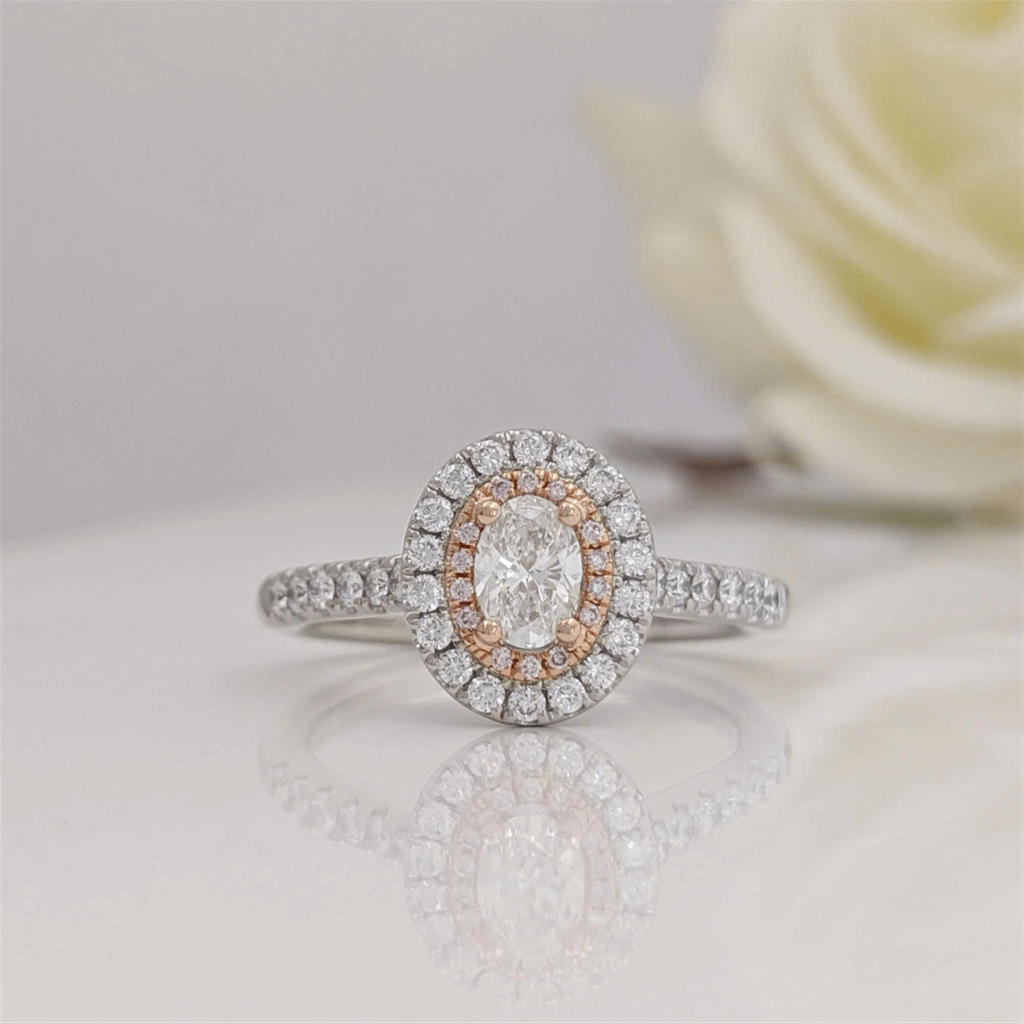
Choosing an engagement ring gemstone and style
When selecting a gemstone or style for your engagement ring, consider its symbolism first.
For example, a diamond suggests clarity and eternity, while an emerald represents growth and renewal. Sapphires denote composure and revival, and rubies the flame of passion.
In terms of shape, round or square cuts maximise carat size and sparkle, optimising the brilliance of your chosen stone. Pear or oval shapes evoke the shared adventures still ahead for the engaged couple.
If a personalised meaning matters most, think about what attributes reflect your relationship and pick a gem that radiates these qualities. However, if heritage and tradition resonate more, you might select a classic diamond or sapphire engagement ring.
Whichever route you go down, look for an alluring stone and style that reflects your love, as well as the wearer’s personal taste. Let the inner sparkle of your partnership shine through with your choice.
Get in touch with Robert Gatward Jewellers today for advice on selecting the perfect engagement ring for your proposal. We can also create a bespoke engagement ring tailored to your unique tastes — contact us to learn more.


